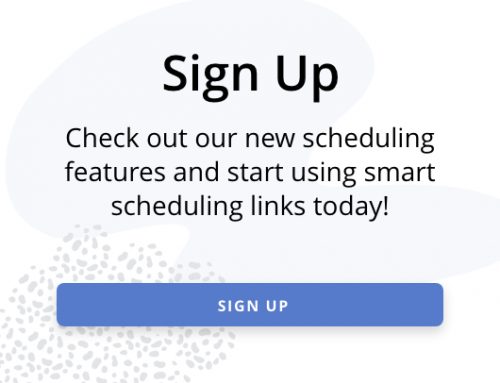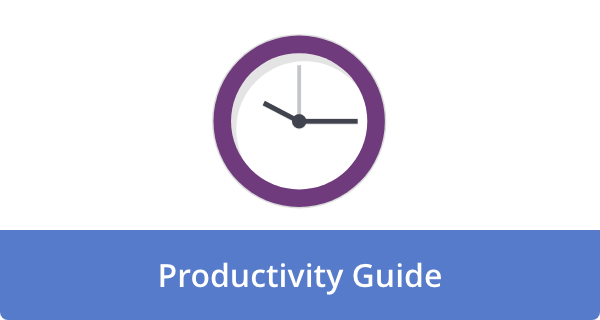

That deadline? No rush. It’s not due for another two weeks. Responding to that email from a client? It’ll just take a minute. That complex project you were just assigned? You can tackle it next month.
Sound familiar? If so, you’re not alone. As remarkable as it is, the brain has a funny way of misguiding us about time. As a result, those little tricks can undermine your productivity, goals, and peace of mind.
Truth be told, we don’t perceive time accurately. It’s flexible and is often distorted by how we feel, what we’re doing, and how motivated we are. By understanding how your brain miscalculates time, you’ll be able to get it back under control — and use it wisely.
The Trap of “Later”: Why We Procrastinate
Our brain often tells us we can always do it later, which is one of the biggest time lies. For example, we convince ourselves there’s no rush since the deadline seems far away. When faced with difficult or unpleasant tasks, it’s tempting to push them aside for easier ones that seem more enjoyable.
It’s not laziness, it’s how we’re wired. It is natural for our brains to avoid discomfort and seek short-term rewards. As a result, when a task feels difficult or boring, we look for excuses to defer it. In our minds, for instance, we see ourselves as more focused and motivated in the future. Sadly, that version doesn’t always show up on time.
It’s easy to underestimate how quickly deadlines approach and how much time and effort it might actually take. The result? Last-minute scrambles, increased stress, and often subpar results.
The “Just a Minute” Myth: How Tiny Tasks Steal Hours
Another sneaky trick? We believe that quick tasks will not consume our time. You could say, “I’ll check my email real quick,” or “I’ll scroll Instagram for a moment.” These seem harmless. However, they rarely take only a few minutes.
We generally don’t track how much time we spend on minor distractions. Sometimes, what we think is a short break ends up being five, ten, or even twenty minutes long. As the day goes on, these moments accumulate, creating what has been called “time confetti”— scattered fragments of time wasted.
In short, we underestimate how much these small tasks slow us down and distract us from our focus. Even though they may seem like breaks, they often derail deeper work and make us inefficient as a whole.
The Overconfidence Problem: Thinking the Future Will Be Easier
It is also common for us to overestimate our future abilities. When planning our days, we assume everything will go smoothly, but we forget to allow for setbacks, delays, and interruptions. This is known as the planning fallacy.
The planning fallacy describes how we underestimate the time and effort required to complete a task or project, often relying on optimistic, “best-case” scenarios. As a result of this cognitive bias, Daniel Kahneman and Amos Tversky found that unrealistic expectations can lead to missed deadlines, cost overruns, and quality compromises.
We expect tomorrow to be faster, sharper, and more focused. In reality, tomorrow’s version of us faces the same challenges as today’s. Overcommitting leads to missed deadlines, frustration, and burnout.
How to Outsmart Your Brain and Reclaim Your Time
The first step toward overcoming these mental traps? You need to recognize them. After all, to really regain control over your time, you need clear strategies that work with, not against, your brain.
Track your time with ruthless honesty.
To regain control of your time, you must understand how it is being spent. Start tracking your time meticulously. Ideally, you should log your activities throughout the day in 15-minute increments, using a notebook, a spreadsheet, or a time tracking application. You may be surprised by the results, revealing “just a minute” illusions for what they are and exposing hidden patterns that can then be addressed.
Embrace the power of the two-minute rule.
Whenever possible, tackle tasks that can be completed in two minutes or less. This proactive approach prevents small, seemingly insignificant tasks from building up into a formidable mental mountain. In contrast, you should avoid rushing to start tasks requiring more than a few minutes. Instead, schedule dedicated time for them.
Time blocking: Carve out your day with intention.
Rather than vague to-do lists, adopt the strategy of time blocking. In other words, schedule specific time blocks for particular tasks or kinds of work on your calendar. You should treat these blocks as inviolable appointments with yourself. By structuring your day this way, you develop a sense of concrete commitment and can resist distractions during your designated “work blocks”.
Harness the focused power of the Pomodoro Technique.
Take advantage of the Pomodoro Technique to structure your work into short, highly focused bursts – typically 25 minutes — followed by five-minute breaks. As you work cyclically, your brain learns to maintain concentration during the work intervals and provides natural breaks for mental recharge, combating the tendency for attention to wander.
Build in the essential buffer: The safety net for reality.
Life rarely unfolds as planned, which is a fundamental truth. As such, consider buffer time when estimating tasks and deadlines. Be prepared for delays, interruptions, or functions that may take longer. To protect yourself from reality’s unpredictable nature, overestimate rather than underestimate.
Cultivate presence through mindfulness.
Developing a greater sense of presence can help you become more aware of how you spend your time. Through mindfulness practices, you can resist the mental pull of future plans or past regrets and make more conscious decisions regarding your time use. By practicing mindfulness every day, you will sharpen your focus and improve your judgment of time.
Reflect and review: Learn from your temporal footprint.
Every day or week, take a moment to review how you spent your time. What tasks went smoothly? Where did time sinks emerge unexpectedly? Where did your attention wander? Developing a habit of regular reflection builds self-awareness and provides valuable insights that enable you to improve your time management strategies over time.
Harness the power of accountability.
Having a trusted colleague, friend, or mentor to share your goals and deadlines with will help you stay on track. In addition to reducing the likelihood of procrastination and distraction, knowing someone else is expecting an update or completing a task also decreases the possibility of procrastination. External expectation is a powerful motivator for staying motivated.
Final Thoughts: It’s Time to Take Time Seriously
Even though your brain is not always a reliable guide when it comes to time, it can be trained to do so. With awareness and a few practical tools, you can stop falling for the same tricks and start managing your time more effectively. The shift won’t happen overnight, but it’s worth it.
In the end, time is the most precious resource; once it’s gone, it can’t be recovered. So, don’t put this off any longer. If you start today, you’ll thank yourself later.
FAQs
Why does my brain seem to distort time?
Our brains don’t have a perfectly accurate internal clock, despite what we think. As a result, our perception of time is highly subjective and influenced by a variety of factors, such as;
- Emotion. Whenever we’re engaged, happy, or experiencing something new, time seems to fly by. In contrast, boredom, stress, and anxiety can make time seem slow.
- Attention. When deeply engaged in a task, we can lose track of time. Distractions, however, can make time feel fragmented and longer.
- Memory. It is common for us to judge the duration of an event based on how many details we remember. In retrospect, events filled with new information seem longer than routine ones.
- Novelty. As we acquire new experiences, we create more neural pathways, resulting in richer memories and an impression that time is passing faster. A familiar routine tends to blur together, making it appear shorter in retrospect.
- Expectation. We may perceive its actual duration differently when we anticipate how long something should take.
- Physiological factors. Our sense of time can be affected by body temperature, heart rate, and even circadian rhythm.
Is this time distortion always a bad thing?
Not necessarily. There are times when the brain’s flexibility with time can be beneficial;
- Flow states. In deeply engrossed activities, timelessness can enhance productivity and creativity.
- Coping mechanism. Time dilation may make stressful situations seem slower and facilitate decision-making.
- Enjoyment. We generally feel that time is flying by when we are having fun.
Time distortion, however, can lead to;
- Poor time management. When tasks are misestimated, deadlines can be missed, and stress levels can rise.
- Procrastination. It is common for people to delay important tasks because they feel that there is “plenty of time.”.
- Increased anxiety. Anxiety can develop from feeling rushed or overwhelmed by time all the time.
- Regret. Feeling that time has “slipped away” can lead to dissatisfaction as you look back.
How can I become more aware of how I actually spend my time?
Awareness is the first and most important step. Here are some techniques you can try;
- Time tracking. Record how you spend your time using a time tracking app or a simple notebook for a few days or a week. It is important to be honest and specific.
- Time blocking. Your calendar should contain specific blocks of time for specific tasks. This will help you see your time commitments more clearly.
- Mindfulness practices: Focus your attention on the present moment without judging it. During different activities, notice the passing of time.
- Review your day. At the end of the day, review your activities and whether they aligned with your priorities.
What are some practical strategies to “take the reins” and manage my time more effectively?
By understanding your time habits, you can implement the following strategies;
- Set realistic goals. Reduce the size of the task by breaking it into smaller, more manageable steps. For each step, estimate a realistic timeframe.
- Prioritize ruthlessly. Focus on the most critical tasks using the Eisenhower Matrix (urgent/important).
- Minimize distractions. Focus on your work by turning off notifications, closing unnecessary tabs, and communicating your need for uninterrupted time.
- Batch similar tasks. To improve efficiency, group similar activities together.
- Build in buffer time. Add buffer time between tasks and appointments to account for unexpected delays.
- Learn to say no. Whenever you receive a commitment that is not aligned with your priorities, politely decline it.
- Practice self-compassion. It’s okay to experience occasional setbacks. It takes practice and refinement to become an expert at time management.
- Experiment with techniques. Your personality and work style will dictate your time management method. Remember, not every technique works for everyone.
- Review and adjust. Adjust your time management strategies regularly. Your needs and priorities may change over time.
Is it possible to completely eliminate time distortion?
Even though you can become more aware of how your brain perceives time and develop strategies to manage it more effectively, it is unlikely that subjective time perception can be completely eradicated. Inherently, time is influenced by our emotional and conscious states. As a result, you will become a more conscious navigator of time rather than a victim of its distortions.
Image Credit: Tima Miroshnichenko; Pexels











John Rampton
John’s goal in life is to make people’s lives much more productive. Upping productivity allows us to spend more time doing the things we enjoy most. John was recently recognized by Entrepreneur Magazine as being one of the top marketers in the World. John is co-founder of Calendar.